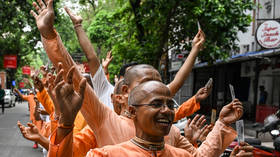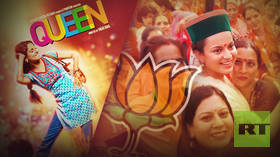India’s election marathon approaches finish line

The seventh and final phase of voting to elect 543 members of the Lok Sabha (lower house of parliament) kicked off in India on Saturday, amid a severe heat wave in many parts of the country. The last stage includes 57 seats across eight states, including Bihar, Himachal Pradesh, Jharkhand, Odisha, Punjab, Uttar Pradesh, and West Bengal, to decide the fate of 904 candidates.
The results will be announced on June 4, though exit polls are expected to begin as soon as the last vote is cast. The exit polls, which are generally considered inaccurate, will predict which alliance will form the country’s next government – the ruling National Democratic Alliance (NDA) or the Congress-led opposition INDIA (Indian National Developmental Inclusive Alliance).
The Election Commission has barred news outlets from publishing exit poll results until 6pm on June 1, the final day of voting.
The election, which began on April 18, has witnessed nearly 1 billion voters and a staggering 8,360 candidates.
“I hope young and women voters exercise their franchise in record numbers. Together, let’s make our democracy more vibrant and participative,” Prime Minister Narendra Modi said in a post on X (formerly Twitter).
On Saturday, Congress Party leader Rahul Gandhi urged people to vote in large numbers in order to strike a “final blow” to the present government, “which has become a symbol of arrogance and tyranny.”
Drumming Up Votes In Himachal Pradesh On #electionday An elderly voter was greeted upon arrival in Karaog Valley polling station on Saturday.#LokSabhaElections2024pic.twitter.com/Z9BTQ2Ogbp
— RT_India (@RT_India_news) June 1, 2024
The Modi-led Bharatiya Janata Party (BJP) is aiming for a third consecutive term in power in the federal government, and a third straight single-party majority. While the ruling BJP is widely expected to secure a majority, the margin of victory could provide insight into the party’s national performance.
The heated rhetoric that Modi and his rivals have engaged in towards the end of the election period has cast some doubt on whether the BJP’s anticipated victory will be easily achieved.
The BJP set a lofty target of winning more than 400 seats in the Lok Sabha, along with its NDA allies. In the 2019 election, the BJP emerged victorious with 303 seats, while the Congress secured 52 seats, falling short of the number required to lead the opposition in the lower house.
Modi, who is the MP from Varanasi, a holy Hindu town in Uttar Pradesh where he first ran in 2014, is running for the seat for the third consecutive time. His main challenger is Ajay Rai, the Congress Party’s state unit chief, who finished third in both the 2014 and 2019 elections. Varanasi is among the constituencies voting on Saturday.
Actress-turned-politician Kangana Ranaut, cabinet minister Anurag Thakur, and R. K. Singh are among other prominent BJP candidates vying for parliamentary seats. The BJP is also hoping to retain its position in the tribal-dominated Mayurbhanj constituency in the state of Odisha, which witnessed simultaneous voting for Lok Sabha and state assembly seats. The Mayurbhanj seat carries high stakes in the general election, being the home of Indian President Droupadi Murmu, who is a native of Uparbeda, a village in the constituency. Murmu, the NDA’s presidential nominee, became the first tribal woman to be elected president of the country in 2022.
Where India Meets Russia: Follow and share RT India on X and Instagram













